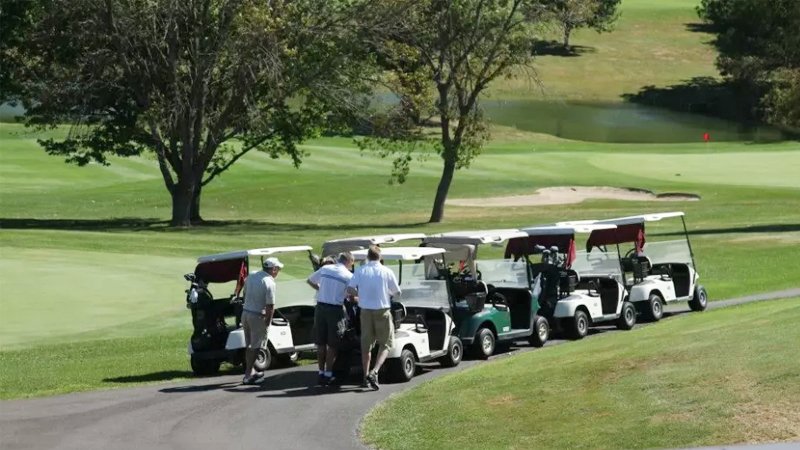There is a lot of good news/bad news in golf as the industry continues to self-correct its way to rounds played supply-demand equilibrium.
Earlier this year, TurfNet reported that demand has outpaced supply since the Covid pandemic. To that end, course closings that have defined the industry for nearly two decades, have slowed, while new course construction continues at a snail's pace.
Since 2006, more than 2,800 courses have closed while only about 600 have opened, according to most industry reports.
Pellucid's Jim Koppenhaver has defined equilibrium as one golf course for every 35,000 golfers. During this year's annual state of the industry address that he presents at the PGA Merchandise Show with Edgehill Golf Advisors principal Stuart Lindsay, Koppenhaver says that ratio is now 1:37,000 thanks to increased golfer demand and a continuance of supply shrinkage.
So, if equilibrium has been achieved, if not surpassed, why are courses continuing to close? There are many reasons, but toward the top of the list are market-specific changing demographics.
Many markets that once were historically white are today much more diverse. According to the U.S. Census Bureau, U.S. population has grown by 10 million in the past 10 years and by 40 million since the golf bust began in 2006. In that time, the Latino population in the U.S. has grown by 78% from 35 million to 62 million, according to census data. Research shows that demographic plays golf at a clip that is one-third that of white America.
"Golf courses that were once thriving in some of those neighborhoods now are wondering where their rounds have gone," Lindsay said.
Until the industry figures out how to attract more participation across cultural lines, those courses will continue to struggle or close entirely.
"A number of locations have changed significantly in demographics along the lines of diversity and income which reduce the golfer pool and make the course untenable," Koppenhaver wrote in an email. "(It) doesn't matter what type of course was originally planted there; it's not going to survive when the demographic profile makes that type of shift over a 10-15-year period of time."
Still, despite the math, new course construction has been held in check (which is a good thing for existing properties) due largely to exorbitant construction costs (which is not a good thing).
When it comes to golf course construction costs, Lindsay considers himself to be somewhat of an expert. And the skyrocketing cost of building a new golf course today, said Lindsay, is good news for existing properties still riding a post-pandemic high.
"I am the construction police. I have files and files on construction costs," said Lindsay. "The cost of building a new golf course today is astronomical."

The average cost, Lindsay says, of planting an 18-hole layout is about $10 million. That figure, he says, is about twice what it was in 2006, when golf course construction slowed to a crawl and closures began to escalate.
"That's just the golf course," he said. "That doesn't include a parking lot, or clubhouse. Just the golf course."
The economics of the current golf market mean fewer golf courses likely will be built. That is especially true when talking about affordable golf.
"You can't build an affordable new golf course anymore. The costs are too high," Lindsay said. "Everything is high-end resort or private."
Although the high (and still rising) cost of new course construction is not necessarily good news for anyone except those who move the dirt, it could be a blessing in disguise for those already in operation.
Since the Covid pandemic, golf has enjoyed a resurgence during which it reclaimed in two years the 80 million rounds played lost from 2000-2019. Because cost will likely keep new construction in check, there is significant demand for tee times in the current course supply.
"This is good news for existing golf courses as long as demand doesn't fall through the floor," Lindsay said. "You can take half what it costs to build a golf course and spend that on a renovation and be very competitive."
About 81 percent of those closings have been privately owned clubs, but that number could be as high as 88 percent, Lindsay said.
"Figuring out the private sector is a little different," Lindsay said. "Figuring out that number is not an exact science."
Although baby boomers still account for about 68 percent of all rounds played, there are now more millennials playing the game, Lindsay said. It was not that long ago that golfers scoured the Internet for discounted fees. Today, younger golfers are stacked in line to get to the first tee, and they're paying full rate.
"The $100,000 household income bracket is growing," Lindsay said. "It might only be the top 10 percent, but people have money, and they're willing to pay to play golf.
"Golf is going to continue to be a game for the affluent. And it is so difficult now to build a golf course, so that existing ones should do fine, unless the bottom drops out of demand again."

